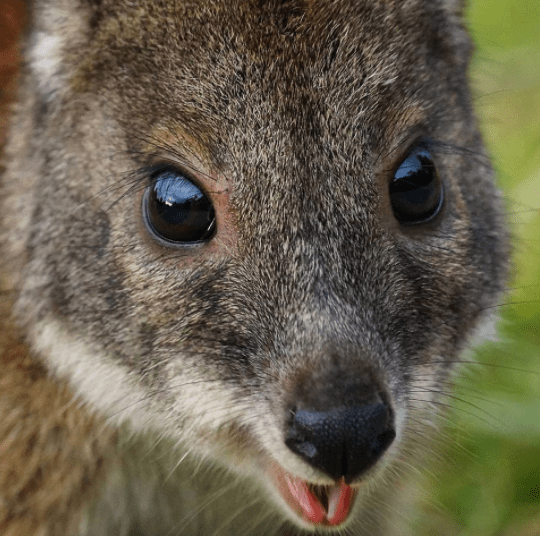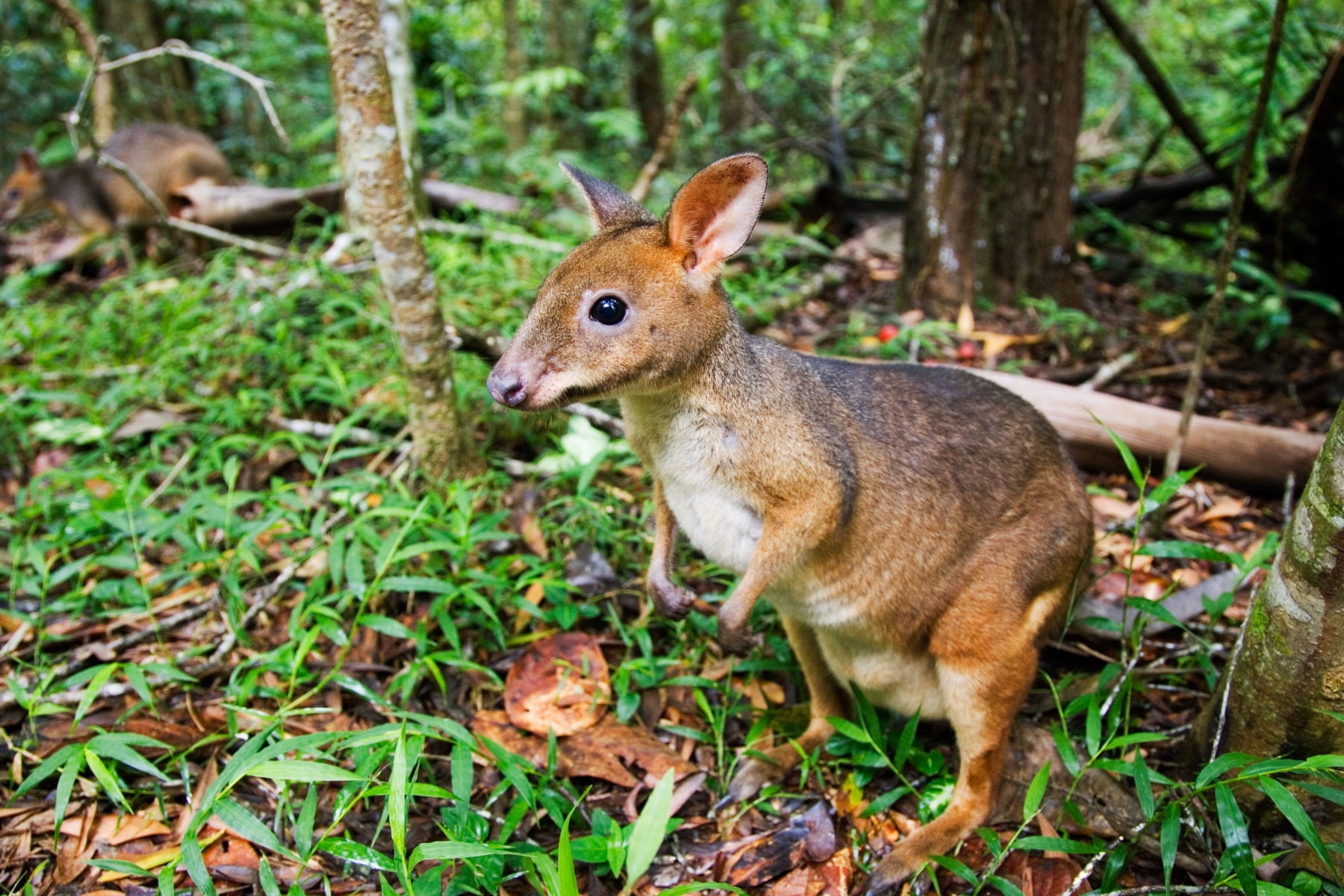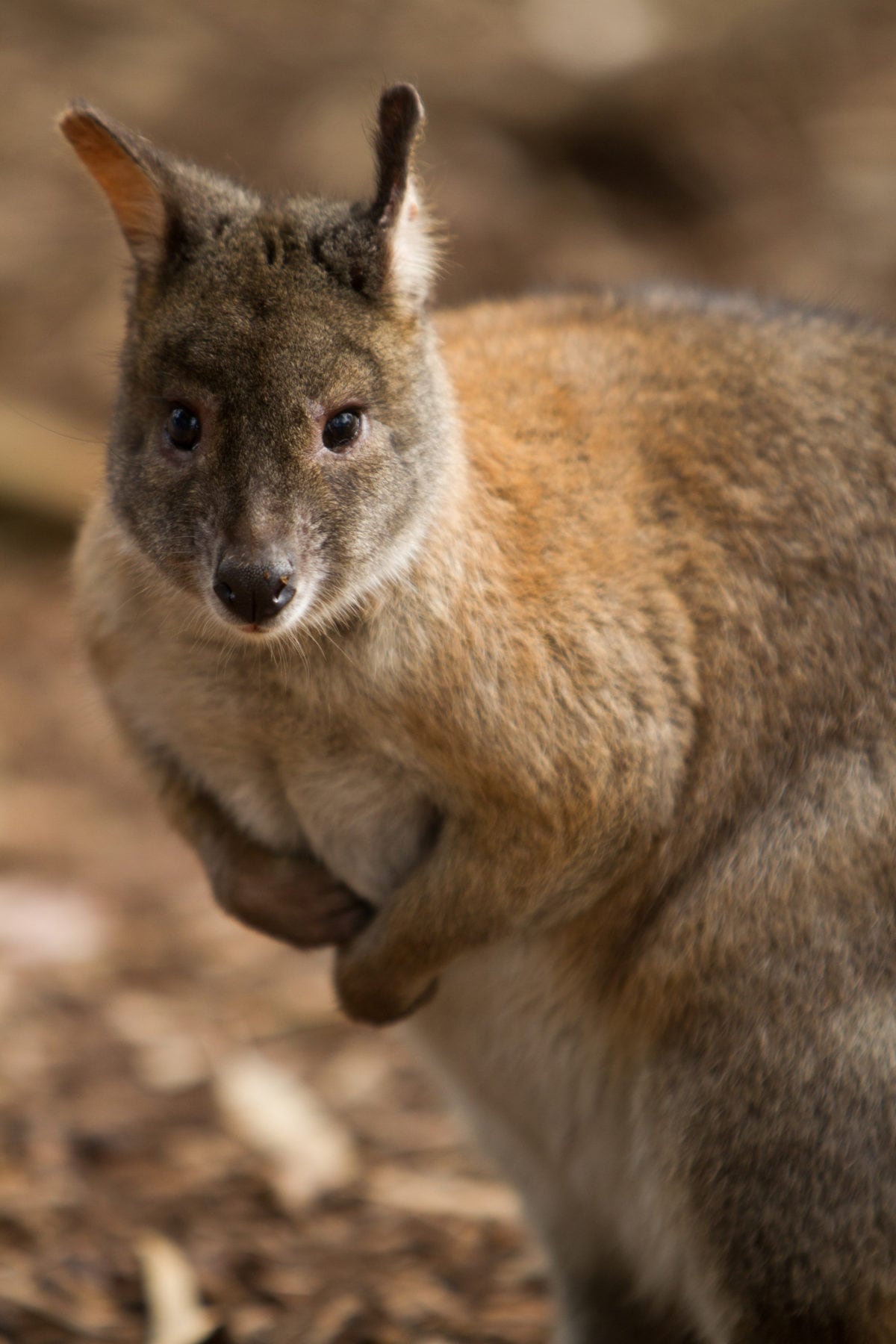Animal ‘selfies’ give scientists a sneak peek into the secret lives of Aussie wildlife

Wildlife can be hard to study at the best of times, but animal selfies are providing a novel way for researchers to monitor how animals use their habitat. The cameras, or ‘camera traps’, are triggered to take a photo or short video as animals wander in front of them. Activated by body heat or motion detectors, the camera traps allow researchers to study wildlife ‘big brother’ style with minimal disturbance to the environment.
Camera traps are providing an intriguing look into the secretive lives of two of Australia’s smallest wallabies. The elusive red-legged pademelon is a brightly coloured marsupial that is found in tropical rainforests of far north Queensland down to northern NSW, where they overlap with the closely related red-necked pademelon. In northern Queensland, red-legged pademelons exhibit ‘spatiotemporal partitioning’, where they eat rainforest fruits and leaves during the day and travel to the edge of the forest to graze at night.

Here at the University of New England, scientists from the Mammal Ecology Group are using camera trap ‘selfies’ to understand how pademelons use their habitat. On the Dorrigo Plateau in NSW, wide ranging swathes of rainforest and wet eucalypt vegetation flank large grassy clearings; ideal habitat for pademelons. Over 50 ‘selfie stations’ are set up here to find out once and for all what these mysterious marsupials are up to. As animals move past the cameras and take a ‘selfie’, the time and date are recorded and used to track when and where both pademelon species move through their environment.
Camera ‘selfies’ will show us how the two species behave when living side by side. When co-existing with red-necked pademelons, red-legged pademelons have rarely been seen beyond the forest edge. Meanwhile red-necked pademelons seem to behave in the same way as their northern neighbours, staying under cover by day and grazing at the forest edge and beyond by night. It is thought that in an effort to avoid competition, red-legged pademelons stay under the forest canopy and forego access to the nutritious grasses along edges and clearings.

Food is more plentiful at forest edges than under the canopy, as increased light penetration stimulates abundant ground cover and understorey growth. Both pademelon species are ecologically similar and it’s likely they are competing for access to grass along forest edges, which is highly nutritious and well suited to their fast metabolism. Researchers assume that difficulty accessing nutritious grasses has contributed to smaller population sizes of red-legged pademelons in NSW.
Competition between similar species for the ideal food source is common. For species such as pademelons, resources can be partitioned either by habitat selection, choice of diet or at what time of day they use certain areas of their environment. Our ‘selfie stations’ will detect who has access to the popular forest edge grass and what happens under the cover of the forest canopy!

The camera traps will also capture ‘selfies’ of other species in the area. This gives researchers a more complete picture of the entire mammal community, and how each species interacts with their environment. This contributes to stronger conservation measures in the future and assists in the maintenance of a diverse and well functioning ecosystem.
Main image: Courtesy of Chris Haskett, @kookaburra_images

